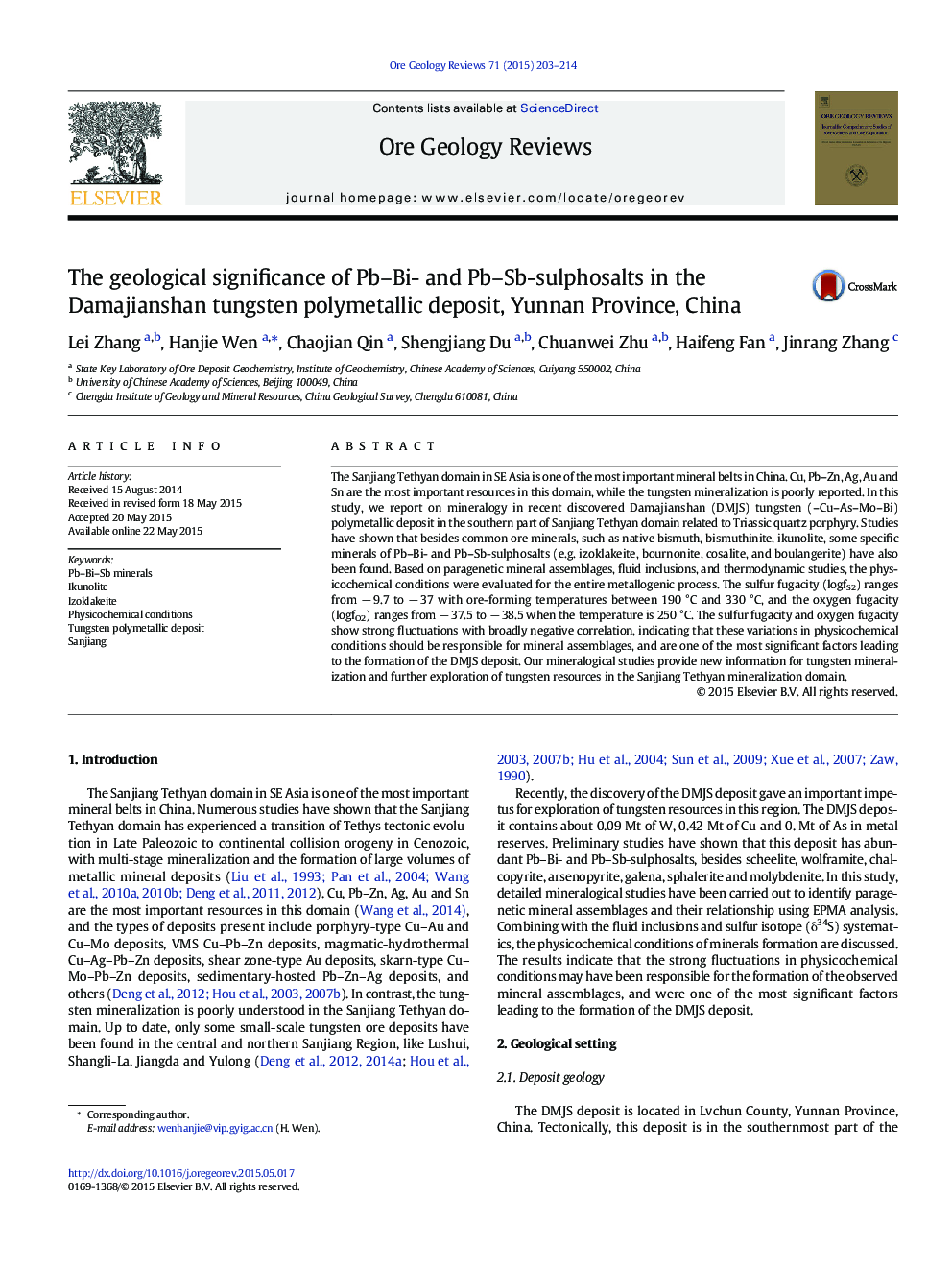| Article ID | Journal | Published Year | Pages | File Type |
|---|---|---|---|---|
| 4697016 | Ore Geology Reviews | 2015 | 12 Pages |
•Rare ikunolite, izoklakeite, and boulangerite were found in the deposit.•Physicochemical conditions were well constrained by logfS2, logfO2, T and pH.•Decoupled logfS2 and logfO2 is important for the origin of W–Cu deposit.
The Sanjiang Tethyan domain in SE Asia is one of the most important mineral belts in China. Cu, Pb–Zn, Ag, Au and Sn are the most important resources in this domain, while the tungsten mineralization is poorly reported. In this study, we report on mineralogy in recent discovered Damajianshan (DMJS) tungsten (–Cu–As–Mo–Bi) polymetallic deposit in the southern part of Sanjiang Tethyan domain related to Triassic quartz porphyry. Studies have shown that besides common ore minerals, such as native bismuth, bismuthinite, ikunolite, some specific minerals of Pb–Bi- and Pb–Sb-sulphosalts (e.g. izoklakeite, bournonite, cosalite, and boulangerite) have also been found. Based on paragenetic mineral assemblages, fluid inclusions, and thermodynamic studies, the physicochemical conditions were evaluated for the entire metallogenic process. The sulfur fugacity (logfS2) ranges from − 9.7 to − 37 with ore-forming temperatures between 190 °C and 330 °C, and the oxygen fugacity (logfO2) ranges from − 37.5 to − 38.5 when the temperature is 250 °C. The sulfur fugacity and oxygen fugacity show strong fluctuations with broadly negative correlation, indicating that these variations in physicochemical conditions should be responsible for mineral assemblages, and are one of the most significant factors leading to the formation of the DMJS deposit. Our mineralogical studies provide new information for tungsten mineralization and further exploration of tungsten resources in the Sanjiang Tethyan mineralization domain.
